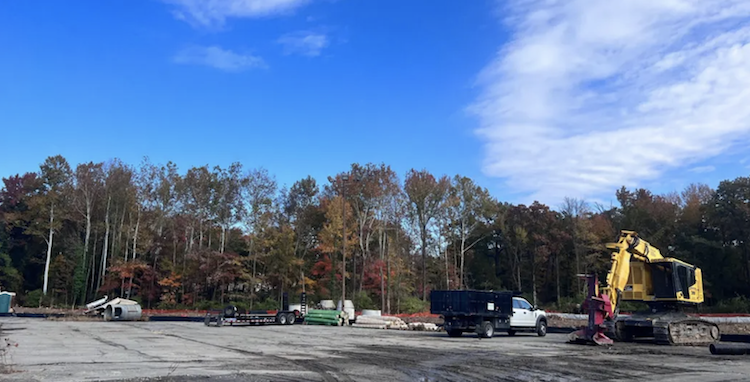Accelerating Sustainable Stormwater Infrastructure Investments
July 16, 2015Expert Urges Expanded Use of P3s to Protect Water Resources
October 1, 2015Informed Infrastructure
Matt Ball
08/02/2015
Greg Cannito, managing director of Corvias Solutions, has nearly two decades of public-private partnership (P3) experience. He managed large P3 projects for the Department of Defense (DOD) and was instrumental in developing the Clean Water Partnership, a first-of-its-kind P3 pilot program that will address federal environmental regulatory requirements for stormwater management in Prince George’s County, Md. This is a 30-year, $100 million community-based partnership that will retrofit the county’s stormwater management systems while creating jobs and strengthening economic development.
Change
The Clean Water Partnership builds on the successful Department of Defense (DOD) P3 model for military housing. The opportunity came about when the Environmental Protection Agency (EPA) held a roundtable about the P3 experience, and similarities between the challenge and constraints were noticed.
The DOD created the framework, and the EPA adopted and adapted it to center its version around responsibilities related to the Clean Water Act. The EPA focused its performance-based outcomes on the National Pollutant Discharge Elimination System criteria. It also established a strong community-outreach effort.
“It’s truly a partnership, where they don’t give up ownership of the assets, and there are performance measures in addition to improved delivery schedule and reduced cost,” says Cannito. “It’s a next-generation structure that holds the fee that we make accountable to more than just schedule and delivery, but also the social outcomes.”
Impetus
By its nature, the Clean Water Act is an underfunded mandate that requires communities to come up with the funds to address deficiencies, which often requires considerable investment to upgrade infrastructure to meet requirements.
The long-term commitment of this design, build, finance, operate and maintain partnership works because it’s centered on efficiency and performance. The anticipated rewards are a 30-40 percent savings against traditional practice.
“The problems that we solved for DOD included a significant backlog of infrastructure improvements, a piecemeal procurement model and quality-of-life issues on all different levels,” says Cannito. “With the P3 approach, you can take what was projected to be a $1 billion challenge over 10 years and now make that challenge only a $700 million challenge. It creates the ability to not defer so much revenue toward stormwater and put that revenue toward other things like schools or other challenges.”
Contractual Advantage
The P3 model, with its responsibility and control over all phases of the asset lifecycle, has an advantage over traditional practices because it creates a lot of economies of scale and efficiencies. By aggregating the full program plan for infrastructure design and replacement, it’s also far more easily financed than smaller piecemeal projects that often are only possible to finance through municipal budgets.
For this pilot, Corvias will do the planning, design, development, implementation, and long-term operations and maintenance of the stormwater infrastructure on 2,000 acres of public land for a period of 30 years.
“We do a fixed-fee contract that’s clear and capped and transparent; then we take a portion of that fixed fee, and we make it incentive or performance based,” adds Cannito. “We only earn our full fee if we achieve the performance metrics outlined by the partner. Those performance metrics have a scheduled delivery, cost, and social outcomes like job creation and workforce development.”
Aggregating an infrastructure project at scale makes it financeable by the private sector.
Process Improvement
The heart of the Corvias process improvement has to do with how they structure their teams and make them all accountable.
“We set up a full design, build, finance, operate and maintain advisory board that looks at the overall scope and design being developed with the mindset of not just designing but also constructing and maintaining,” notes Cannito. “All the prime contractors are plugged into what’s being developed, and there’s no handoff between design, construction, operations and maintenance. Everybody clearly understands what’s being developed, and we’re all looking at lifecycle costs together.”
Outcome
The county is able to obtain more resources and project-delivery expertise without having to prioritize what gets fixed first. With the aggregated larger project, it can gain long-term funding for a large capital project and spread the cost over a long span of time.
The arrangement also is upfront, where transparency is built into the contract, and decisions are made based on the needs of the infrastructure and community, without a focus on expense management and profit.
“When we listened to the stormwater challenge at EPA—with flooding, pollution and challenges in drought—it was obvious that there was a social and community aspect to whole watershed management,” notes Cannito. “Projects with a long-term program and projects where there is an opportunity to derive social outcomes and community benefits are the problems we like to solve, and that’s what we do really well.”
Toolbox
Corvias has many software systems to track the information across the lifecycle, including a robust payment-processing system and a GIS to provide real-time data measurement.
“Part of that answer involves data,” says Cannito. “We’ve gotten involved in systems that factor in weather tracking to be able to monitor and adjust maintenance and operations. This allows us to be proactive with the asset, and protect the asset and maintain it when it needs the most attention, responding to real-time conditions.”



